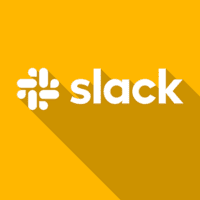
Slack is a messaging app which helps you and your team work together seamlessly. It is composed of channels and direct messages, where team members can communicate easily on multiple topics and conversations. Members can also share files and connect via audio/video using huddles.
Each MBA student receives a Slack account when they are admitted to Haas and are added to their student workspace designated by program and graduation year. If you’re not sure how to access your workspace, please contact your Program Office.
SLACK FAQs |
If you’re new to Slack and need an overview of the basics, Slack’s Quick Start guide or the Tutorials page can help you get started.
We highly recommend setting up a profile to let others know who you are at Haas.
- Please upload a profile picture to help others identify you easily.
- Consider adding your name pronunciation and recording an audio clip. You can set this up by clicking the +Add name pronunciation link below your profile picture.
- Scroll down to the About me section if you wish to add other information about yourself (please note, there are program-related fields that cannot be changed manually. This includes Graduation Year, Program, and Cohort).
Who’s on Slack? Use the People & user groups option or browse through the Workspace Directory to find members of the Haas Community already on Slack.
Slack organizes conversations into channels and is recommended for team-based discussions. Most frequently asked questions include how to find existing channels, how to create channels, and how to share channels across different workspaces.
Haas has a multitude of workspaces for students, faculty, and staff. If you’re trying to communicate with a Haas member not in your workspace, there’s a good chance they’re in another workspace. A shared channel allows people from different workspaces to work together in the same channel from their separate workspaces. The Workspace Directory can help locate which workspaces other members are in.
Too much noise? Configure your Slack notifications to reduce unnecessary distractions.
For additional information and resources, visit the Slack Help Center.
Still not finding what you’re looking for? Contact your local workspace administrator.
Help Desk
Have questions? Need to submit a ticket? Send an email to [email protected].